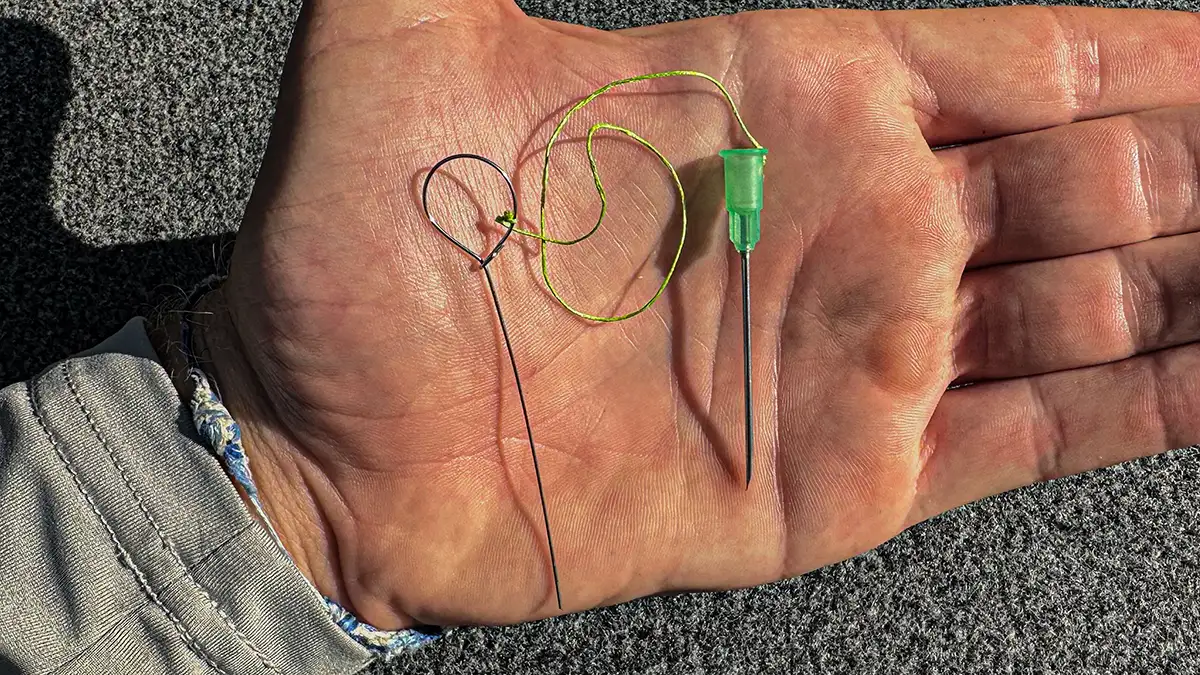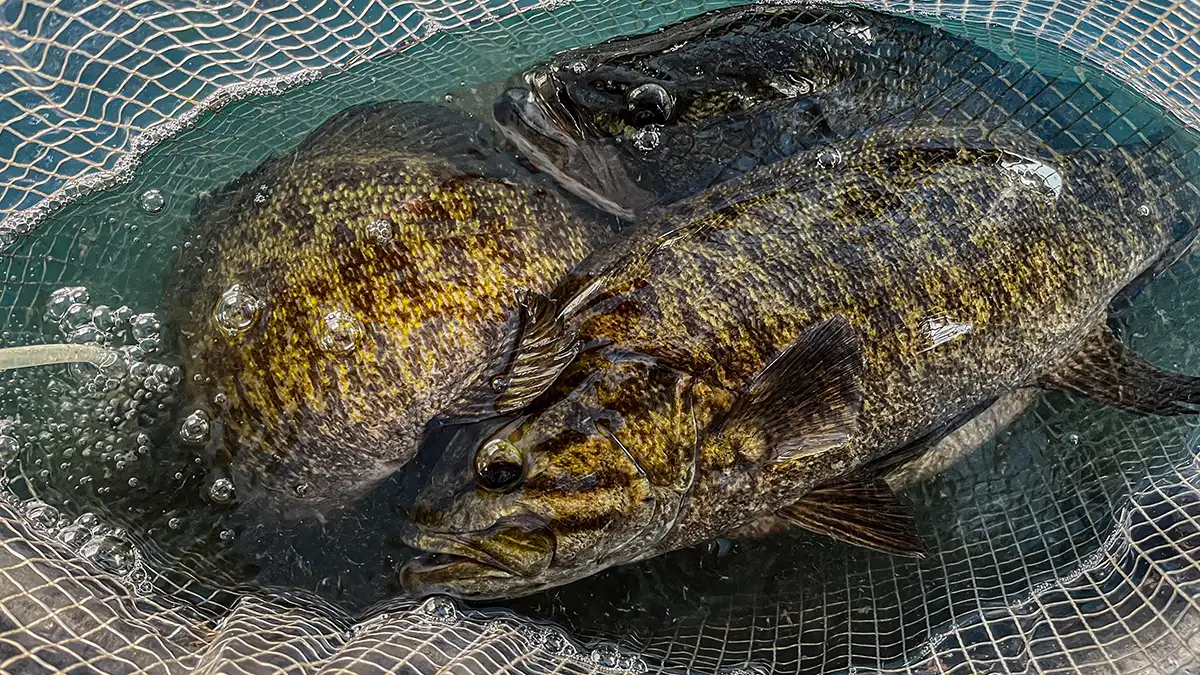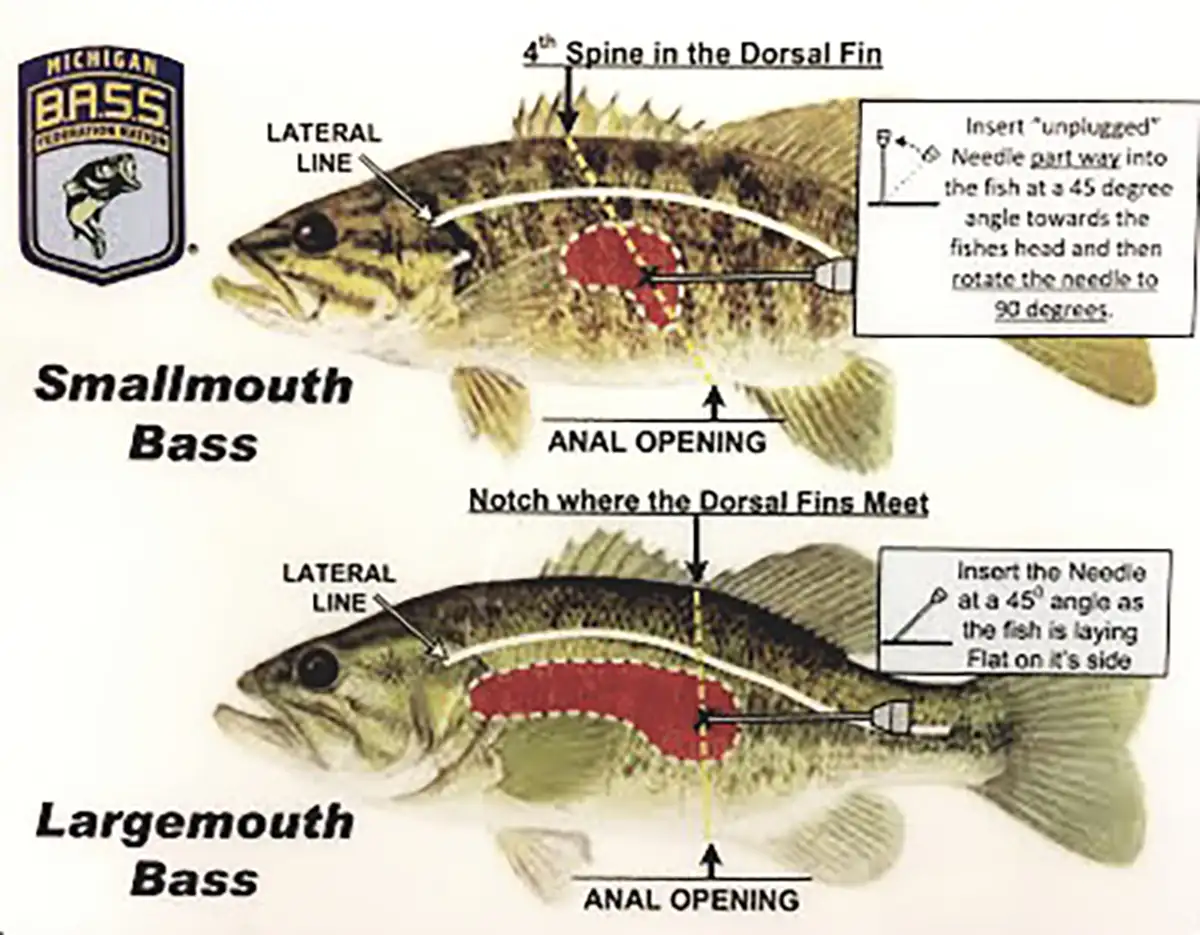Fishing tournaments in the summer can be a fantastic way to spend the weekend and relax on the water. This season is ideal for using your electronics to locate bass in their deep summer habitats. However, high water temperatures and long hours in a livewell can stress the fish, so it’s important to protect our resources.
To ensure all five of my fish make it back to weigh-in healthy and alive, I always keep three key items in the boat during the summer. By following these steps, you can help ensure that your fish survive and are available to be caught again.

FIZZ YOUR FISH
One of the most important and underutilized tools for keeping fish alive in the summer months is a fizz needle. When fish are caught out deep and quickly brought to the surface, it causes their swim bladder to quickly expand due to the rapid change in water pressure. This results in a condition known as barotrauma. This expansion causes the fish to float on top of the water without being able to swim down and right themselves in deeper water.
This condition not only causes them to exert too much of energy, but it can also cause damage to their internal organs. These fish must be treated at the first sign of distress in order to ensure their survival. Waiting until the end of a tournament day to administer a fizz needle is oftentimes too late due to the damage it causes to their internal organs.
When fish are placed in a livewell without being fizzed, they tend to float on top of the water. This causes them to exert energy throughout the day trying to stay right side up. This extreme exertion of energy prevents the fish from regaining its strength and relaxing in the livewell. This often leads to their death and prevents you from safely releasing them back into the lake. A tell tale sign that your fish needs fizzing is when they roll over on their side, and are constantly fighting to stay on the bottom of the livewell.
HOW TO FIZZ
Fizzing a fish is safe, easy and effective once you understand how to do it properly. Draw a line from the notch between the hard spiny fins, and the soft fins on their back, all the way down to the anal pore. Line this up with the pectoral fin on the side of the bass and insert your needle at an angle to get under the scale. Then turn the needle perpendicular and push in gently until air begins to bubble out of the tube.
Allow the air to release from the bladder until the fish rotates to its natural position. This typically takes between 4-6 seconds. Another easy way to locate this swim bladder is by laying the fish on its side. Look for the highest point of the the fish right behind his pectoral fin. This is another tell tale sign of where you should insert you fizz needle if easily identifiable.
The picture above serves as a visual of where you should insert your needle in order to ensure a higher survival rate for your catch. You will know if you inserted your needle in the correct location if air bubbles release from the fish once punctured. While this may seem like a daunting task at first, once you understand how to administer this device, it quickly becomes a fast and easy way to ensure your catch will survive to see another day.
You can purchase a fizz needle from these online retailers:
USE LIVEWELL ADDITIVE
Another great way to ensure a fish’s survival in the livewell is by using a product like T-H Marine G-Juice. These additives have a wealth of benefits that helps ensure your fish regains his strength and is protected from both diseases and bacteria while in your livewell. This formula helps remove nitrites, ammonia, chlorine, chloramines and heavy metals, as well as adding essential electrolytes that help the fish replenish after a strenuous fight.
T-H Marine G-Juice also helps with replenishing slime coat, stopping bleeding from hook penetration, as well as helping the fish relax in the livewell. This formula is readily available at almost all fishing retailers, and is a simple way to help ensure your fish is healthy and protected. G-juice is often used in bait tanks, minnow buckets, live wells or whenever fish are being transported through live release boats or other similar methods. This is a great way to ensure your fish are protected not only in the summer, but throughout the entire year.
THE IMPORTANCE OF ICE
Ice is also an essential tool in ensuring that your fish are being kept at an adequate water temperature during hot summer days. The top of the water column is the hottest part of the water during the summer months. The high temperature causes the top of the water column to reach extreme temperatures that are not suitable for keeping bass alive. Your livewell sucks in the water from the top of the water column, causing your livewell temperatures to be much warmer than where the fish was caught. This is why it is imperative to keep ice in your boat in order to cool down this water throughout the day and ensure that your fish are cool and comfortable.
I like to cary three or four big bags of ice with me during a day on the water and administer around a quarter of a bag every hour. This cooler water helps relax the fish and leads to a much higher surveil rate throughout the summer. This method ensures that your fish will be in cool water that is similar to the water temperatures found near the bottom of the lake where most fish reside this time of year.
It is also important to make sure your water is properly oxygenated throughout the day. I like to turn my livewell recirculation to manual in order to provide the fish with freshly oxygenated water. I also like to turn my aerator on auto instead of manual. I do this in order to keep from constantly pumping hot water into the livewell after you iced it down. This allows the water to stay cool for much longer as apposed to constantly pumping in new hot water.
By implementing all three of these tactics, you will ensure that the vast majority of your fish will live through weigh-in and go on to be caught again. This is not only beneficial for your tournament finish, but it also helps ensure your fishery will continue to be productive and have a healthy population of bass for years to come.














